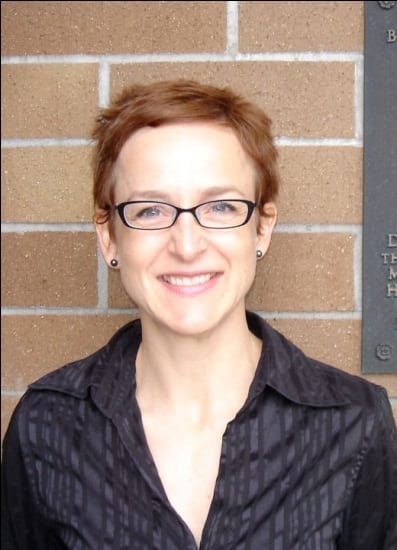 Jillian Buriak graduated from Harvard University (1990) and received her PhD in organometallic chemistry from Université Louis Pasteur, Strasbourg (1995). Following a 2-year postdoctoral stay at The Scripps Research Institute, California she worked as an Assistant and Associate Professor at Purdue University, Indiana. Since 2003, she is Professor of Chemistry and Canada Research Chair of Nanomaterials at the University of Alberta. Her main research interests lie in the field of nanoscience and focus on the synthesis, characterization, and application of various different nanoscale structures. In particular, her present research areas include nanoparticle-based photovoltaics, polymer self-assembly and nanopatterning, nanomedicine, and nanoparticle-based catalysis.
Jillian Buriak graduated from Harvard University (1990) and received her PhD in organometallic chemistry from Université Louis Pasteur, Strasbourg (1995). Following a 2-year postdoctoral stay at The Scripps Research Institute, California she worked as an Assistant and Associate Professor at Purdue University, Indiana. Since 2003, she is Professor of Chemistry and Canada Research Chair of Nanomaterials at the University of Alberta. Her main research interests lie in the field of nanoscience and focus on the synthesis, characterization, and application of various different nanoscale structures. In particular, her present research areas include nanoparticle-based photovoltaics, polymer self-assembly and nanopatterning, nanomedicine, and nanoparticle-based catalysis.
What motivated you to specialize in nanometer-scale structures as your main area of research?
The old expression, “you can’t teach an old dog new tricks” is completely false for nanomaterials. As is well established now, the size, shape and surface chemistry of a nanoparticle has profound effects on its most fundamental characteristics; a nanoscale gold octahedron has a different UV-Vis spectrum from a gold nanorod, showing that the electronics are different, in spite of the fact that the two particles are, from an elemental perspective, identical. Thus, one is truly limited only by one’s imagination, and as a result the nanoworld is a fascinating place in which to work. I had my first introduction to the concept of new properties derived from an ‘old’ material via nanostructuring during my post-doc, when we collaborated with the group of Michael Sailor at UCSD on porous silicon. Bright light emission from nanostructured silicon was a wonderful surprise, since bulk silicon has poor light emitting properties. Since then, I was hooked and have never looked back.
How do you see this field of research evolving in an interdisciplinary manner?
Materials scientists are inherently multidisciplinary, and as a result, researchers from many other disciplines are looking to us to become involved in some of society’s greatest challenges. Our materials are needed for energy-based applications, such as photovoltaics, solar fuels, and the variety of energy storage mechanisms needed for when the sun is not shining (as examples). Nanomaterials with biological activity that can interact with the human immune system, for diagnostics and imaging, and for therapeutics is also an enormous area of interest. It is clear that researchers who can make, characterize, and apply materials and nanomaterials are in a fantastic position to assist in tackling some of the biggest, most difficult, and most exciting problems on the planet.
How do you feel about your new role as a member of the Advanced Materials Editorial Advisory Board?
I am absolutely thrilled to be a part of Advanced Materials. Advanced Materials is a journal with a long and illustrious history in the area of materials science publishing, and I am honored to play a (small but I hope helpful) role in its future.
In which area of materials science you expect considerable potential for future developments?
I believe that medical and energy applications are going to be important. In-vivo medicine needs precisely the right materials and surface chemistries to survive the complex mixture that is a biological fluid, and to exquisitely target a specific receptor, tissue, tumor, or invader (bacterium or virus), and report back. Beautiful work has been going on in this area for some time, but as more fundamental biology/medicine is uncovered, new targets are being continually exposed – new materials and surface functionalization strategies are needed. Materials for renewable energy have seen an incredible sinusoidal path of interest, with a high in the 1970’s, to a drop for close to 20 years, followed by a very fast resurgence with the obviousness of climate change over recent years. Much work needs to be done, but with the tools we now have in hand, that we did not have in the 1970’s with respect to instrumentation, the sophistication of synthesis, and the accumulation of decades of new knowledge, we can be successful. Exciting times are indeed upon us.

















